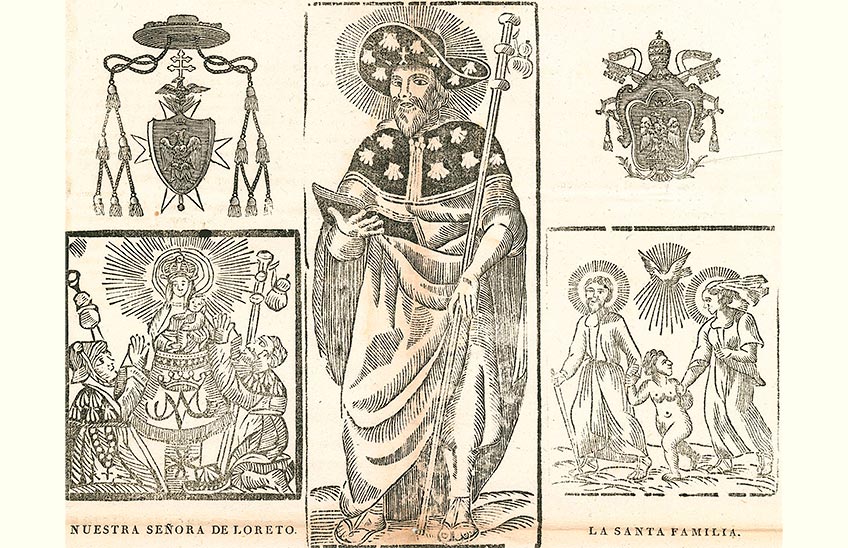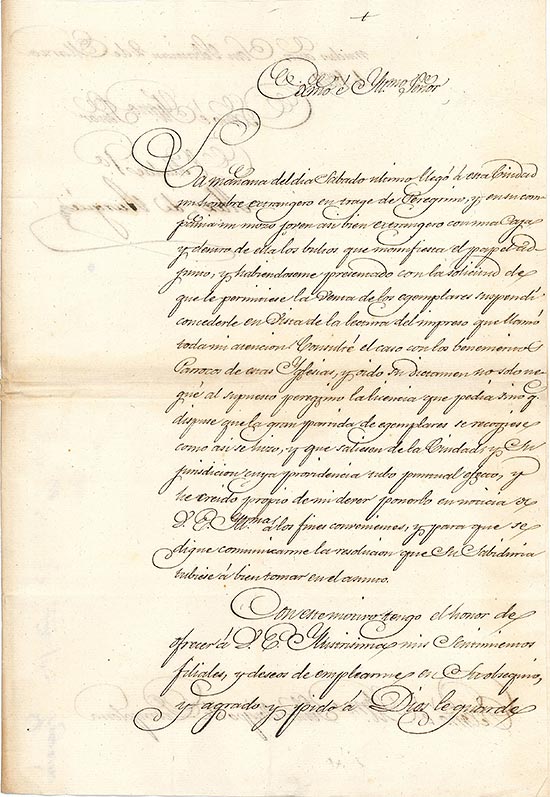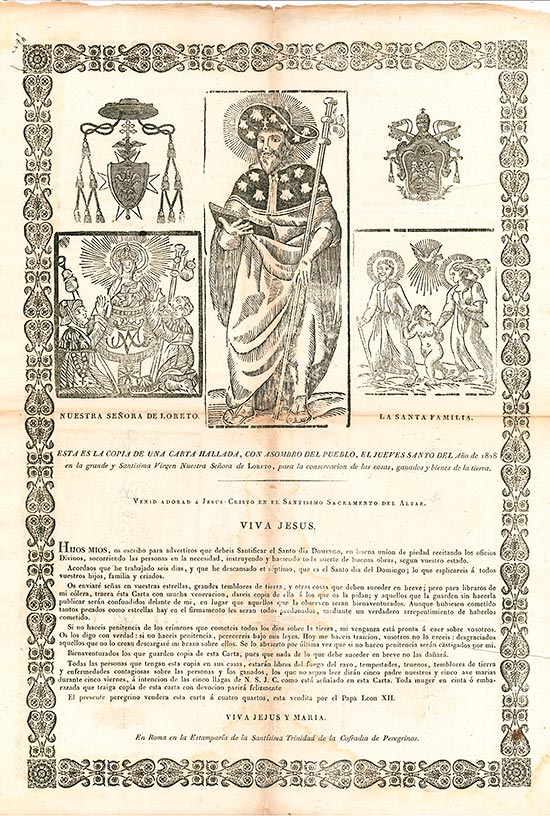A print denounced and requisitioned in San Sebastian, in 1829.

Photofile Diocesano de Pamplona/Detail of the print denounced in San Sebastián in 1829.
From the city of San Sebastián, a large illustrated print was reported to the Ecclesiastical Court of the Diocese of Pamplona, to which it belonged along with a large part of Guipúzcoa. Analysis of its fraudulent content led to an order to collect all the copies that a foreign pilgrim was carrying for sale.
The denunciation reached the capital of Navarre with a letter, signed by Alejandro de Burgué, mayor of San Sebastián, dated 2 March 1829. In it he reported the arrival in the city of a man in pilgrim's costume, accompanied by a young boy, both foreigners, who were forbidden to sell the printed matter, after reading and examining its contents. The mayor discussed what had happened with the parish priests of San Sebastián and, after listening to their opinions, confiscated all the prints and ordered the supposed pilgrim and his companion to leave the city and its jurisdiction.
The reply from Pamplona from the bishopric was not long in coming and was dated 4 March. In it, thanks were expressed for sending the denounced prayer card, which showed the "primary purpose that the supposed pilgrim had in spreading it, deceiving the innocent and insulting, at the same time, our holy religion with his nonsense and lies". The mayor's attitude and prudence is praised, and he is thanked for his conduct. Finally, he asks him to hand over all the seized holy cards to the vicar of Santa María and archpriest José Bernardo Echagüe.

Letter from Alejandro Burgué, mayor of San Sebastián, to the bishop of Pamplona reporting the seizure of the print, 2 March 1829. Photo file Diocesan of Pamplona
Let us move on to the description of the large printed sheet. It bears the imprint of the supposedly Roman printing house of the "Estampería de la Santísima Trinidad de la Cofradía de los Peregrinos", which is in all probability false since, as we shall see, other details of the printing lead us to believe that it was made in Spain. A typographic border, quite common in gozos of the time, encloses some images in the upper part and the text of a prayer in the lower part. In the centre we find the degree scroll, which reads: "THIS IS A COPY OF A LETTER FOUND, TO THE ASONEMENT OF THE PEOPLE, ON HOLY THURSDAY OF THE YEAR 1828 / in the great and most holy Virgin of Our Lady of LORETO, for the preservation of the things, livestock and goods of the land".
After the text of the letter, which insists on sanctifying the feasts, it warns of some calamities such as earthquakes, from which those who venerate the printed document could be spared. Likewise, it warns that "All persons who have this copy in their houses will be free from the fire of lightning, storms, thunder, earthquakes and contagious diseases on people and livestock, those who cannot read will say five Our Fathers and five Hail Marys during five Fridays in intention of the five wounds of Our Lord Jesus Christ as indicated in this letter. Every pregnant or pregnant woman who brings a copy of this letter with devotion will give birth happily". In final, a true talisman for pregnant women and to free them from the many misfortunes of those times, in a context of political instability and the experience of the consequences of so many wars that had devastated Spain and Europe.
The letter or form would be sold by the pilgrim for four quarters, stating that it was blessed by Pope Leo XII.

Illustrated print, the subject of the complaint and seizure in San Sebastián, in 1829. Photo file Diocese of Pamplona
The illustrated part of the print is, as we have pointed out, the upper part. The figure of St. James the Pilgrim, in a woodcut engraving, presides in the centre. The saint is dressed timelessly in a tunic and cloak, together with the sash with the pilgrim's shells. The wide-brimmed hat also ostentatiously displays the scallops. Like an apostle he carries the book, and like a rosemary he carries the staff and the gourd. On either side of the hat are two engravings made using the same wood engraving technique, probably taken from the joys of the Virgin of Pilar and the Holy Family. There are also two coats of arms of the aforementioned pope, one clearly false because it shows the arms of Leo XII - in azure, a golden spread eagle crowned with the same - as bishop, something that never happened as he was archbishop, and the other with the same heraldry but now papal, with the tiara and the keys. In the episcopal coat of arms, the issue of tassels corresponds to those of bishop, while the double-barred cross is that of patriarch or archbishop. In addition to this incongruity, it should be added that below the woodcut of the Coming of the Virgin of Pilar, a cartouche has been placed, erroneously indicating that it is the Virgin of Loreto, which also gives an idea of the misleading nature of the print.
The aforementioned pope died in the same year as the judicial proceedings, in February 1829. He had come to the papal throne in 1823, after being appointed titular archbishop of Tyre in 1794 and cardinal with degree scroll of Santa Maria in Trastevere in 1816.
On this occasion, fortunately, the printed document has been preserved, together with the transcript, something that has not happened on other occasions in similar cases or when prohibiting the reading of some books, printed documents and even games. Let us recall, for example, the Inquisition's edict of 1725 ordering the collection of a sheet of paper of the highest mark on which "in imitation of the game of the goose, another of the Constitution Unigenitus issued by Clement XI is represented" ..... With reckless, scandalous, irreverent, erroneous, heretical and seriously injurious propositions". With the edict, we have not found the map or game with its printed notes.
file The small transcript is kept in the Diocesan Museum of Pamplona (box 430, no.1).
